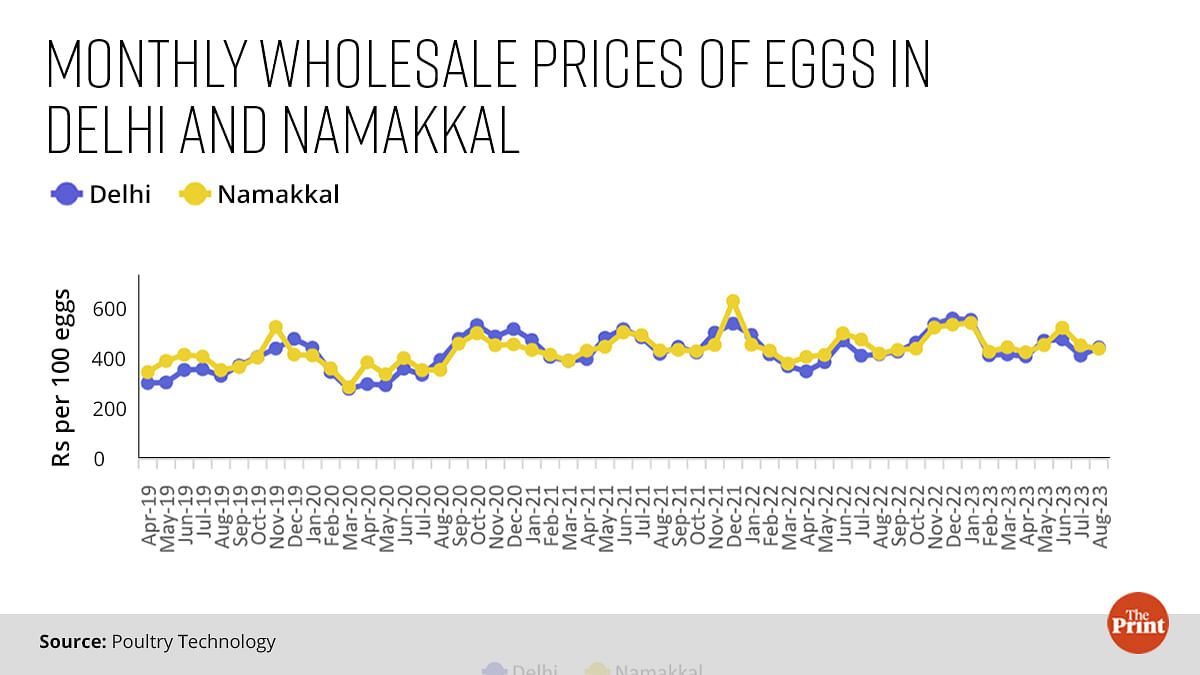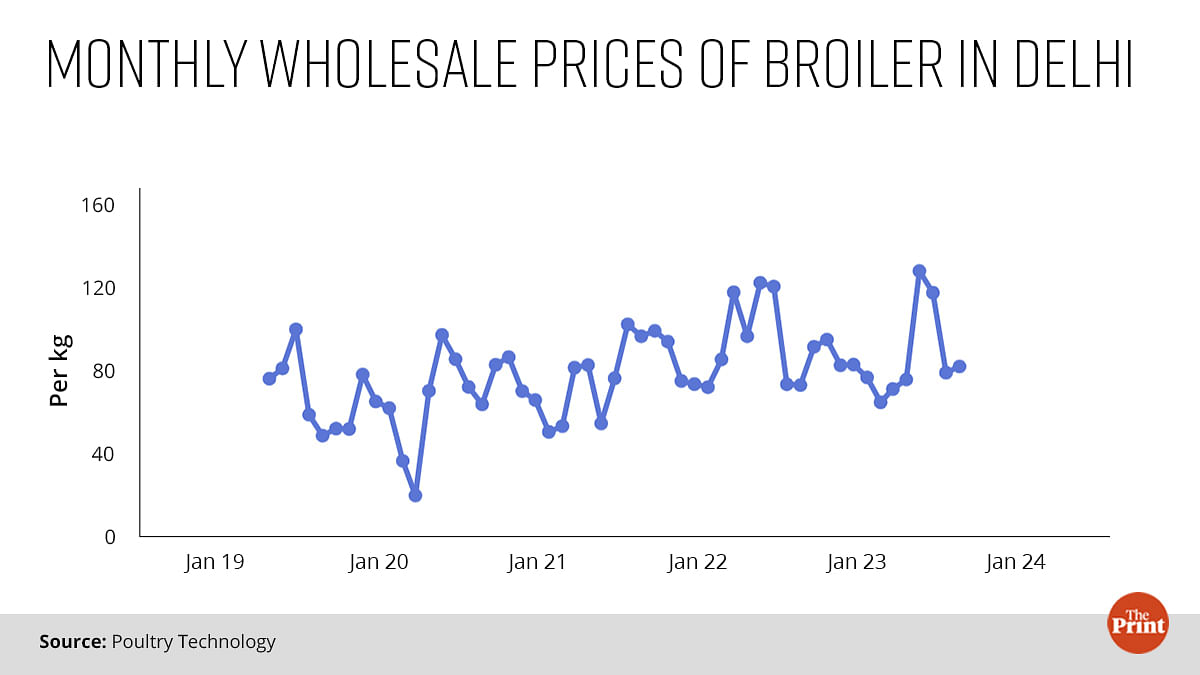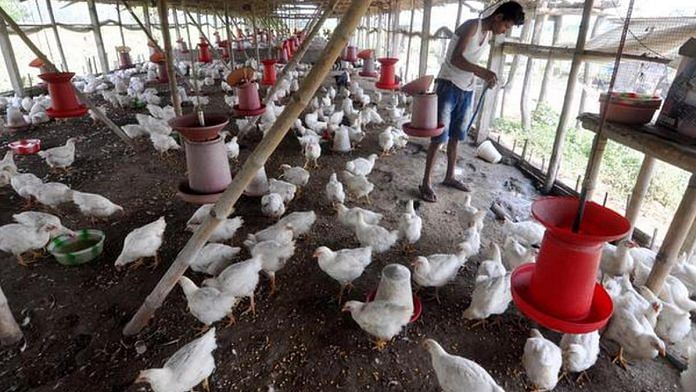Year-on-year food inflation in August softened to 9.94 per cent as compared to 11.51 per cent in July. Lower inflation in vegetables has helped. But the real matter of satisfaction is that the protein rich, non-vegetarian items have not experienced high inflation. In August, eggs and meat and fish clocked inflation of 4.31 and 3.68 per cent, respectively.
The ruling elites in Union ministries and some state governments, have substantial presence of vegetarians who enjoy a dominant voice in policy formulation. As a result, vegetarianism is presented as a great virtue and the choice is often imposed on people and even children. Thus, Madhya Pradesh, Chhattisgarh and Rajasthan do not allow serving of eggs to children under the PM Poshan scheme. Meat shops are routinely closed in some regions during Navratri. This year, they were closed during ‘Sawan’ for about two months (July and August) in several districts of Uttar Pradesh as they were on the route of Kanwarias. Is the relative stability in prices of eggs and poultry due to fall in demand in certain months? We do not think so.
The price mechanism
Unlike most other agricultural commodities, the egg prices are influenced by the rates declared by the National Egg Coordination Committee (NECC) which was set up by Dr BV Rao in 1982. Unlike some other agricultural commodities, where the government fixes the Minimum Support Price, it does not play any role in the market prices of eggs and broilers. Through its attractive media campaign in the 1980s, the NECC created substantial demand for eggs as nutrition rich food.
Based on demand and supply, NECC announces the price at which eggs are sold by the farmer/ producers to the wholesalers. By and large, the market prices are in tandem with the prices announced by the NECC.
Figure 1 shows that in August 2023, the wholesale prices of eggs were ruling at Rs 448 per 100 eggs in Delhi and Rs 443 per 100 eggs in Namakkal, Tamil Nadu (egg hub of India).

In other metropolitan cities also, including Bengaluru and Mumbai, the price of 100 eggs was between Rs 480 and Rs 490 in August 2023.
Egg and broiler prices have also witnessed huge fluctuation in the past. In January and February 2020, the egg prices had fallen to Rs 340-350 per 100 eggs in Namakkal, Delhi and Hyderabad due to fake news on social media linking consumption of chicken and eggs to the spread of coronavirus. As a result, the demand was destroyed. Broiler prices in Delhi had crashed to Rs 45 per kg. The poultry farmers suffered huge losses and many of them were forced out of business.
But the industry recovered and since then, the prices have mostly been stable.
Also read: Indian tur dal needs urgent attention. Depending on African imports stifles our market
Protein and income
The sector is dominated by integrators who provide one day old chicks to poultry producers and provide them feed, medicines and professional guidance. The producer provides physical infrastructure and labour. At 35 to 40 days, the broilers are picked up by the integrator. The producer is shielded from price fluctuations as he is paid by the integrator for the services rendered.
There are large, well known integrators like Venky’s, Suguna, IB group, Sneha Farms and Kerala’s Kudumbashree. They run modern hatcheries and ensure genetic purity and disease control.
The National Action Plan for Egg & Poultry-2022 has estimated that the organised sector commands about 80 per cent of the total market while the unorganised sector has just about 20 per cent share.
In recent months, broiler prices have seen an increase. In May and June 2023, they were selling at Rs 140-150 per kg due to rising feed cost and inadequate rains causing high mortality in poultry farms. The hatcheries in Tamil Nadu and Karnataka stopped hatching eggs for almost 15 days. This led to shortage of chicken in the market and increased the prices of broilers in May and June 2023. The feed prices have now started cooling, with maize prices dropping. The prices of soybean, the other main ingredient in feed, are also stable.
Presently, poultry producers are realising Rs 106 per kilogram (kg) of broiler in Delhi (figure 2).

Poultry is a relatively cheaper source of protein and provides stable income to producer farmers. While their income from cultivation of crops has stagnated, many farmers have diversified to poultry production. This has not only increased their income but it has also created employment in rural areas. The demand for protein-rich and reasonably priced poultry and eggs can further go up if people are given complete freedom to make food choices.
Siraj Hussain is a former Union agriculture secretary. Kriti Khurana is a PhD scholar of economics at BITS Pilani, Hyderabad. Views are personal.
(Edited by Anurag Chaubey)



